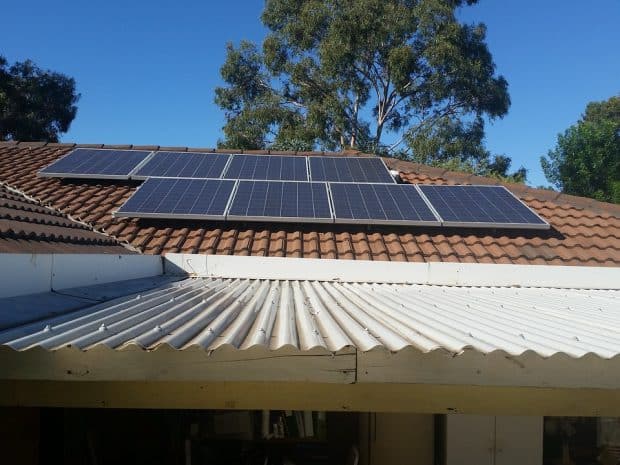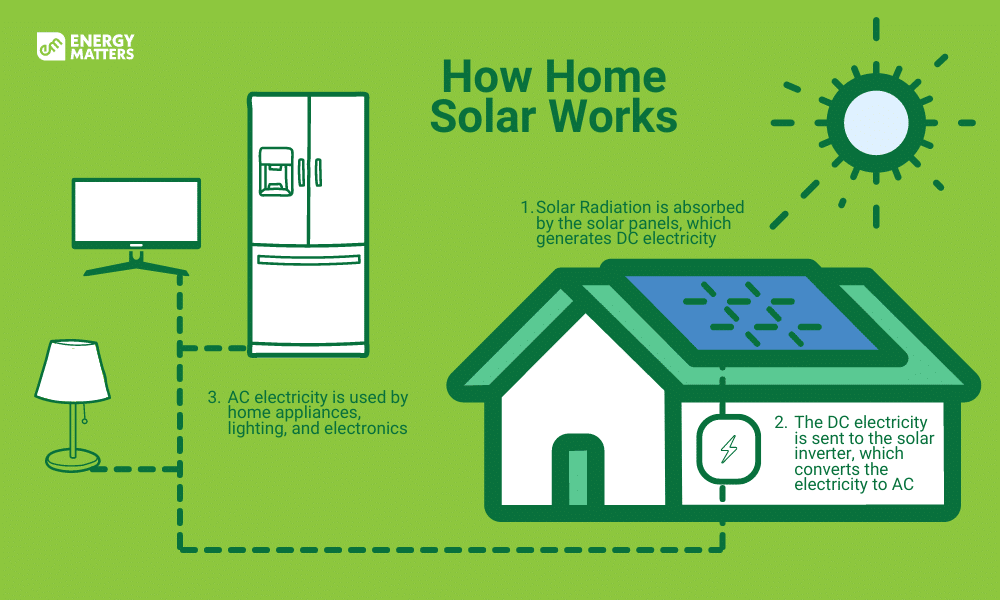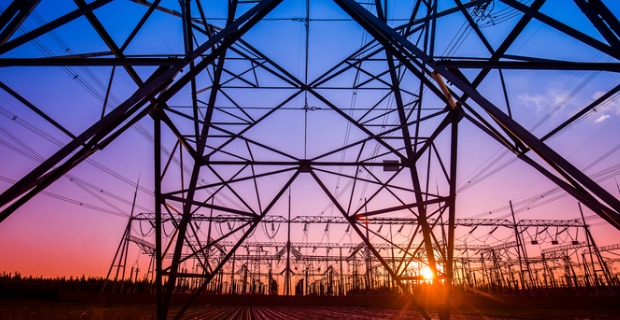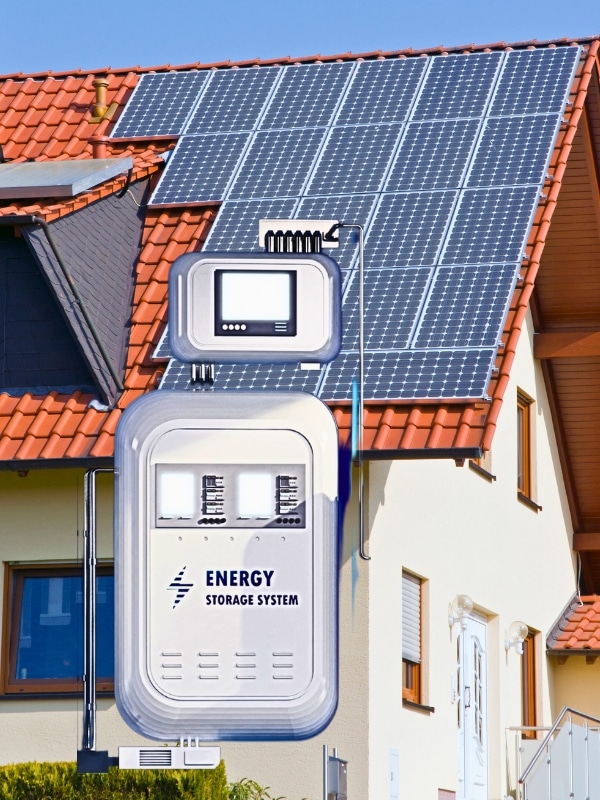There are limits to the size of the solar panel system you can install on your rooftop. Naturally, there is only so much weight your roof can support! But a less obvious limit sets how much energy your rooftop solar power system is permitted to generate.

On this page
This figure varies. Your electricity retailer imposes restrictions on solar power capacity depending on where you live, sometimes even which town you live in!
These two factors, the number of solar panels and their power output are also subject to how many solar installers or how much clean energy you want to generate for home or business use.
Let’s look at the factors involved in limiting your solar power while exploring the levels of energy you can achieve in your area.
Energy Matters has been a leader in the renewable energy industry since 2005 and has helped over 40,000 Australian households in their journey to energy independence.
Let us discuss and choose the best quote that suits your needs and budget, and we can connect you with our trusted local installers, who will provide up to 3 FREE quotes for your home and business solar energy system.
How do rooftop solar panels work
Australia’s rooftop solar systems use sun rays to generate electricity for homes and businesses. Sunlight hitting the solar panels triggers the photovoltaic effect, converting it into direct current (DC) electricity. This DC electricity flows through an inverter, transforming it into usable alternating current (AC) that powers your appliances.
Any excess electricity produced during the day can be exported back to the grid for credit, while at night or during low sunlight periods, you simply switch back to drawing power from the grid. This grid-connected system, combined with government incentives and feed-in tariffs for exported energy, makes rooftop solar a practical and sustainable option for many Australians.
Read more about:

How to install rooftop solar panels
Installing rooftop solar panels can be a rewarding journey towards energy independence and environmental responsibility. The process typically involves:
- Assessing your energy needs and roof suitability, considering factors like your electricity bills and roof orientation.
- Obtaining quotes from qualified Clean Energy Council-certified installers, comparing system size, panel types, warranties, and costs.
- Finalising the system design and obtaining necessary permits with the installer’s guidance.
- Installation, which involves mounting the panels, connecting them to an inverter, and completing electrical work.
- System testing and handover, ensuring everything functions properly before you start enjoying the benefits of solar power. Remember, government rebates and feed-in tariffs can significantly offset the upfront costs, making solar an attractive option for many Australians.
What is a rooftop solar power plant?
Rooftop solar power plants, characterised by photovoltaic (PV) panels installed on residential and commercial rooftops, play a pivotal role in Australia’s renewable energy landscape. These aren’t massive solar farms but individual solar panel installations on the rooftops of homes and businesses.
How much power do rooftop solar panels generate?
The amount of electricity generated by these panels depends on several factors. Firstly, the size of the solar installation matters—the more panels you have, the greater the energy production. Additionally, the orientation and tilt of the panels play a crucial role. Sun exposure, shadows, and the number of daylight hours also impact energy output. Generally, northern areas receive more sunlight than southern regions, resulting in higher energy yields.
On average, solar panels in Australia produce around 10% of the country’s electricity, with over 30% of households now equipped with rooftop solar systems, totalling an impressive capacity of 11 GW. A single solar panel in the country can produce 1.2 to 1.48 kilowatt-hours (kWh) daily, translating to roughly 300 to 370 watts per hour under ideal conditions. However, this is just a starting point, as the total power generation of a rooftop solar system depends on various factors.
How to install solar panels without damaging the rooftop waterproofing floor
When installing solar panels on rooftops in Australia, it’s crucial to consider both energy efficiency and the roof’s integrity. Here are some key steps to ensure a successful installation without compromising the waterproofing:
- Choose an experienced installer: Opt for a solar installer with genuine roofing experience. They should have a track record of completing rooftop installations and be respected by roofing system providers. A knowledgeable installer will understand the challenges of different roof types and can plan accordingly.
- Design with solar in mind: If you plan to install solar panels, design the roof system accordingly. Consider factors like slope, placement of drains, and scuppers to allow maximum solar coverage. Use high-density cover boards and fully adhered membrane systems to support solar installations.
- Proper staging: Coordinate the roof installation and solar panel installation schedules. Staging the process effectively ensures the roof is ready to accommodate the panels without compromising its waterproofing.
- Panel stand height: Elevate the solar panels using a stand with a minimum height of 7 to 8 feet. This prevents the panels from touching the ground and allows wind to pass underneath, keeping them dry and minimising potential water damage.
- Sealing and maintenance: Professional installers should use high-quality silicone and flashing to seal drill holes and other areas where water can seep. Additionally, walkway pads around the solar panels should be considered to protect the roof during maintenance.
How much does rooftop solar cost in Australia?
The cost of rooftop solar in Australia varies depending on the system size you choose, with larger systems generally offering more cost-effective pricing per kilowatt.
As of March 2025, a commonly installed 6kW system typically ranges from $5,500 to $9,000, while a larger 10kW system falls between $9,500 and $12,500. It’s important to remember that these are estimates, and the final price can be influenced by factors like your location, specific equipment chosen, and any additional state incentives available.
What is the Australian government solar rebate 2025?
The Australian government’s solar rebate in 2025 provides financial incentives to encourage the adoption of renewable energy systems. Under the Small-scale Renewable Energy Scheme, households and small businesses that install small-scale renewable energy systems—such as solar photovoltaic (PV) panels, wind turbines, hydro systems, solar water heaters, and air source heat pumps—may be eligible for benefits.
The price of STCs can vary based on market forces or be fixed. Specific state-based rebates are also available. This initiative aims to accelerate the transition to cleaner energy sources and reduce greenhouse gas emissions.
Read more about:
How many solar panels do I need for a roof?
Several factors come into play when determining the number of solar panels needed for a roof in Australia. First, consider your budget, available roof space, electricity usage, and future energy plans. Recently, opting for a system size of at least 5kW has become recommended due to the lower cost of solar panels and higher feed-in tariffs.
A 6.6kW solar panel system with a 5kW inverter is an attractive option. The number of panels required depends on their efficiency. For instance, a 6.6kW solar system could consist of 16 x 410 W panels or 18 x 365 W panels. The physical dimensions of solar panels typically measure 1.70m x 1.00m, requiring approximately 20.4 – 23.8m² of roof space for a 5kW system.
Ultimately, choosing a larger system size is advisable if you can afford it and have sufficient roof space, considering factors like higher feed-in tariffs and future storage needs1. Remember, while a 5kW system (around 15-20 panels) is usually sufficient for an average Australian home, adding more panels won’t hurt if they fit on your roof.
How long do rooftop solar panels last
Rooftop solar panels in Australia can be expected to last between 20 and 30 years, with most manufacturers offering a 25-year performance warranty. While their efficiency will gradually decline at around 0.5% to 2% annually, well-maintained panels can still produce over 80% of their original output after 25 years, making them a long-term investment for Australian homes. Read more about How Long Do Solar Panels Last in Australia? Degradation Explained.
Why does the electricity retailer set limits?
Technically, it’s not your retailer setting the limits on how much solar energy or how many rooftop solar power panels you can install. The limits are decided by the owners of the network that distributes the electricity, the poles and wires. This network owner is also known as the distributor. Confusingly, in some cases your energy retailer also owns the network. Energex in Queensland, for example.

Limits on your solar generating capacity are set by companies like Energex because the electricity distribution network was originally set up to push power in one direction only and at a predictable rate. When wind and solar power came along there was a disruption in this traditional network model. The consumers became producers, and they wanted to feed their energy into the network.
This two-way model of energy distribution is a people’s revolution in energy. It’s great for the environment and great for the hip pocket.
Impact of rooftop solar panels on the grid
But the owners of the networks are concerned that too much solar electricity flowing into the grid could disrupt the operation of the existing power stations. For example, the grid needs to be kept at a certain voltage. Too much solar input pushes the voltage up and creates problems.
What’s needed is smarter technology that regulates the influx of clean energy so that it can co-exist with the older types of battery systems of generators. That technology is not quite at the stage where solar power can feed to the grid without limit. But it’s only a question of time until the regulators work out a way to tap into the excess electricity of every rooftop solar system. Already, neighbours are sharing electricity in some areas, cutting out the energy retailer completely.
What are the current limits for solar installation?
Unless otherwise specified, states and territories give automatic approval to rooftop solar power panel systems that comply with the Australian standard for solar installation: 5 kW or under. In most states and territories, there is automatic approval given to any other solar power system up to 5 kW. However, this is in not set in stone.
For example, in May 2017, the Queensland Government (which owns retailer Energex) changed the regulations for solar installation limits. Automatic approval for rooftop solar used to stop at 5 kW, but the new rules give approval for up to 10 kW.
Battery proviso
The proviso is that you are not permitted to have a battery system capable of feeding power into the grid. The government was fearful of a blowout in their feed-in tariff budget, which originally did not allow for batteries. Feeding power into the grid from batteries during the night would prove too costly for its feed-in tariff scheme.
The AS/NSZ 4777 standard allows most networks to allow system sizes on a single phase connection up to 5 kW. The three-phase connection size is up to 30 kW.
As long as your rooftop solar power panels system meets the requirements of your network, you will have no problem getting pre-approval.
But you should speak with your solar installer about what you can and can’t do. For example, in Western Australia, some electricity retailers allow the installation of rooftop solar depending on which town you live in and provide a handy calculator.
You may also want to take into account size dependent rebates. Currently, Solar Victoria is offering rebates through the Solar Homes program for those in Melbourne and the rest of the state who wish to buy solar panels. The Victorian Government is providing a significant rebate, up to the value of half of an average 4kW solar panel system so it makes sense to get a system bigger than 4kW.
State-by-state comparison
The following table shows the limits for automatic pre-approval for solar panel systems by state/territory and energy retailer. The figures quoted are inverter limits.
Australian Capital Territory (ACT)
ActewAGL
Single phase: 5 kW solar inverter capacity.
Australian Capital Territory (ACT)
ActewAGL
Single phase: 5 kW solar inverter capacity.
NEW SOUTH WALES (NSW)
Ausgrid
Single phase: 10 kW solar inverter capacity.
Three-phase: 30 kW solar inverter capacity.
Essential
Single phase: 5 kW (3 kW rural) solar inverter capacity.
Three-phase: 15 kW (9kW rural) solar inverter capacity.
Endeavour
Single phase: 5 kW solar inverter capacity.
Three-phase: 30 kW solar inverter capacity.
NORTHERN TERRITORY (NT)
PowerWater
Class 1 – Private/residential:
Single phase: 5 kW solar inverter capacity.
Three-phase: 7 kW (10 kW per phase solar inverter limit)
Class 2 – Private/residential & small commercial:
Three-phase: 30 kW with zero export limiter solar inverter (10 kW per phase solar inverter limit)
QUEENSLAND (QLD)
Energex
Up to 30 kW, however all solar installations are subject to the application process Ergon
Single phase: 5 kW solar inverter capacity.
Three-phase: 15 kW solar inverter capacity.
SOUTH AUSTRALIA (SA)
Single phase: 5 kW solar inverter capacity.
Three-phase: 30 kW solar inverter capacity.
TASMANIA (TAS)
Tas Networks
Single phase: 5 kW solar inverter capacity.
Three-phase: 30 kW solar inverter capacity.
VICTORIA (VIC)
United Energy
Single phase: 10 kW solar inverter capacity.
Three-phase: 30 kW solar inverter capacity.
CitiPower
Single phase: 5 kW solar inverter capacity.
Three-phase: 30 kW solar inverter capacity.
Jemena
Single phase: 10 kW solar inverter capacity.
3-phase: 30 kW solar inverter capacity.
AusNet
Single phase: 5 kW solar inverter capacity.
Three-phase: 15 kW solar inverter capacity.
WESTERN AUSTRALIA (WA)
Western Power
Single phase: 5 kW solar inverter capacity.
Three-phase: 30 kW solar inverter capacity.
Horizon Power
Eligibility to install rooftop solar panels depends on which town you live in – use a calculator.
Use our easy-to-use solar power and battery storage calculator to determine the size of your solar system with storage! Our solar calculator will generate performance information and potential savings.
We can send this information to 3 of our pre-vetted and trusted local installers in your area to receive obligation-free solar quotes.
Feed-in tariffs, state-by-state
There are rebate schemes to encourage solar users to feed electricity into the grid from their rooftop solar power panels. You can find out about them on Energy Matters’ feed-in tariff page.
Otherwise, here are the contact numbers to find out about the latest feed-in tariffs in your area:
- ACT: Environment, Planning and Sustainable Development Directorate, 13 22 81
- NSW: Division of Resources and Energy, 1300 736 122
- NT: Department of the Chief Minister, (08) 8999 5511
- QLD: Department of Energy and Water Supply, 13 43 87
- SA: Department of State Development, (08) 8226 5500
- TAS: Department of State Growth, 1300 135 513
- VIC: Department of Environment, Land, Water and Planning, 136 186
- WA: Public Utilities Office (08) 6551 1000
Rooftop solar power panel system sizing
As mentioned previously, up to 5 kW seems to be the current acceptable capacity for solar dictated by most electricity retailers.

As mentioned previously, up to 5 kW seems to be the current acceptable capacity for solar dictated by most electricity retailers.
Regardless of that limit, to get the very most out of your rooftop solar power panels you should consider having the system linked to a solar battery storage. That’s because most of a typical family’s energy consumption occurs after work and school hours.
So, during the day, while your panels are busily making electricity, that electricity is going into the grid at a feed-in tariff that is usually a lot less than the retail price you will pay when you really need the energy. It’s more effective to charge your home battery with any unused electricity. Note that batteries significantly raise the investment that you need to make initially and will increase the time it takes for your system to pay for itself.
Size matters but so does value and a battery can add to your payback time
One of the best ways to gauge the size of the solar system you need is to review your power usage on your electricity bill. According to the Clean Energy Council, a typical Australian house consumes around 18 kilowatt hours (kWh) per day. So a 1-2 kW solar system displaces an average of 25-40% of the average electricity bill.
Consider that today’s average size for a solar system is 3 kWh. It’s possible in some cases to virtually eliminate power bills with the right solar system, battery storage and smart inverter.
How much sunlight is available for rooftop solar panels?
The Clean Energy Council table below shows how much energy you can expect to generate from the sun using rooftop solar power panels in Australia’s capital cities.
The power output of a solar PV system depends on its efficiency, size and location. The table below shows the average daily production of some common grid-connected systems throughout Australia.
| City | 1 kW system | 1.5 kW system | 2.0 kW system | 3.0 kW system | 4.0 kW system |
|---|---|---|---|---|---|
| Adelaide | 4.2 kWh | 6.3 kWh | 8.4 kWh | 12.6 kWh | 16.8 kWh |
| Alice Springs | 5.0 kWh | 7.5 kWh | 10.0 kWh | 15.0 kWh | 20.0 kWh |
| Brisbane | 4.2 kWh | 6.3 kWh | 8.4 kWh | 12.6 kWh | 16.8 kWh |
| Cairns | 4.2 kWh | 6.3 kWh | 8.4 kWh | 12.6 kWh | 16.8 kWh |
| Canberra | 4.3 kWh | 6.45 kWh | 8.6 kWh | 12.9 kWh | 17.2 kWh |
| Darwin | 4.4 kWh | 6.6 kWh | 8.8 kWh | 13.2 kWh | 17.6 kWh |
| Hobart | 3.5 kWh | 5.25 kWh | 7.0 kWh | 10.5 kWh | 14.0 kWh |
| Melbourne | 3.6 kWh | 5.4 kWh | 7.2 kWh | 10.8 kWh | 14.4 kWh |
| Perth | 4.4 kWh | 6.6 kWh | 8.8 kWh | 13.2 kWh | 17.6 kWh |
| Sydney | 3.9 kWh | 5.85 kWh | 7.8 kWh | 11.7 kWh | 15.6 kWh |
The rated output, e.g. 4.0kW, is achieved in perfect lab conditions. The table above takes real world conditions into account when predicting averages for any given system.
Panels generate more electricity in summer than in winter. The table above reflects the electricity generated average across the whole year.
A typical Australian house consumes around 18 kilowatt hours (kWh) of electricity per day. This means that a 1-2 kW system could displace 25-40 per cent of your average electricity bill.
City rooftop solar comparison
It shows that in Brisbane a 3 kW solar system will on average generate 12.6 kWh daily, or 70% of an average household’s daily power usage.
In Melbourne, a city that is on average less sunny than Brisbane, the same 3 kW solar system would generate 10.8 kWh daily (60% of daily usage).
This shows that with batteries to store the excess solar power you generate, it is possible to supply a substantial amount of your home energy needs. As long as the correct sized system solar battery was installed.
Other questions you could ask about your solar system include:
- Does the limit laid down by your electricity retailer apply only to solar inverter capacity, or also battery inverter capacity?
- Are you limited on how much electricity you can feed into the grid from your panels?
- Will you need a solar smoothing device? These iron out the fluctuating energy output of your panels as a result of changes in the weather.
Get in touch with Energy Matters now
The best way to find out the ins and outs of rooftop solar power panel installation is to get in touch with Energy Matters in your area and talk to one of our consultants about a quote. It can seem more complicated than it really is.
They can to tell you about the latest rules and limits on your solar installation. Inside information from Energy Matters’ experts will make sure your system is the best you can afford, while remaining within the regulatory framework of your electricity retailer.
Now is the right time to switch to solar energy. We recommend seeking at least 3 solar quotes to ensure you get the best deal and select the right installer you can trust. With this, you can guarantee a solar system that meets your energy needs.
Factors affecting the number of solar panels you can install on your roof
When considering installing solar panels, it is essential to understand the factors that can affect the number of solar panels installed you can install on your roof. Factors such as roof size, orientation, shading, and others play a significant role in determining the maximum solar capacity you can achieve.
Solar panel sizes and wattage: Individual solar panels’ dimensions and power output impact the overall system capacity. For a comprehensive overview of solar panel sizes and wattages, refer to our page: Solar panel sizes and wattage.
Roof orientation: The ideal orientation for solar panels in Australia is a north-facing roof, as it maximises exposure to sunlight throughout the day and results in optimal energy generation, while east and west-facing roofs can also be considered but may produce slightly less energy, and south-facing roofs are generally less suitable due to reduced sunlight exposure.
Roof angle: The efficiency of solar panels is influenced by the roof pitch, with an optimal angle in Australia being approximately equal to the latitude of the location, such as 33 degrees in Sydney, although a range of roof angles can still generate a considerable amount of energy.
Shading: Shading plays a crucial role in solar panel efficiency. It obstructs sunlight and diminishes energy production, necessitating a thorough evaluation of shading conditions on the roof and expert advice to determine possible solutions or alternative solar panel capacity and placements.
Energy consumption: To determine the appropriate number of solar panels needed for your household, it is important to evaluate your energy consumption patterns, as higher energy usage typically requires a much larger solar system size to meet electricity needs effectively.
Local regulations and incentives: Local regulations and incentives play a significant role in determining the number of solar panels allowed and the financial feasibility of installation, emphasising the importance of understanding these factors before making any decisions.
Calculating the optimal number of roof solar panels
Investing in solar energy is beneficial for homeowners in Australia due to abundant sunlight. Determining the ideal number of solar panels for a roof can be complex but essential. Factors such as roof size, orientation, tilt, shading, and energy consumption patterns must be considered. Calculations involve determining average daily energy consumption and available roof space and using formulas to estimate the number of panels. Online tools and more solar energy professionals can assist in this process. Solar panel wattage, average daily peak sunlight hours, and system efficiency are factors in the calculation formula. Consulting with experts is recommended for personalised advice. Careful consideration and calculations ensure an optimal solar investment that maximises energy generation and cost savings.
Maximising your rooftop solar investment
To make the most of your rooftop solar panels:
- Understand your energy needs: Assess your household’s energy consumption to determine the appropriate system size.
- Consider future energy usage: Plan for potential increases in energy use, such as purchasing an electric vehicle or adding new appliances.
- Evaluate roof space and orientation: Ensure your roof has adequate space and is positioned to capture optimal sunlight.
- Stay informed about incentives: Research local rebates and incentives that reduce installation costs.
For a comprehensive guide on residential solar options, check out our page on Residential Solar.
Ready to upgrade your solar systems and take your energy savings to the next level?
Embrace the energy efficiency revolution by upgrading your solar systems and adding a battery or solar inverters with Energy Matters.
Check our page for our recommended solar products.
With our 3 free solar quotes, you can compare plans from pre-qualified and vetted installers in your area and find the perfect solution for your home and business. Harness the sun’s power and save money on electricity bills while reducing environmental impact. Let Energy Matters guide you towards a brighter, more sustainable future.








































